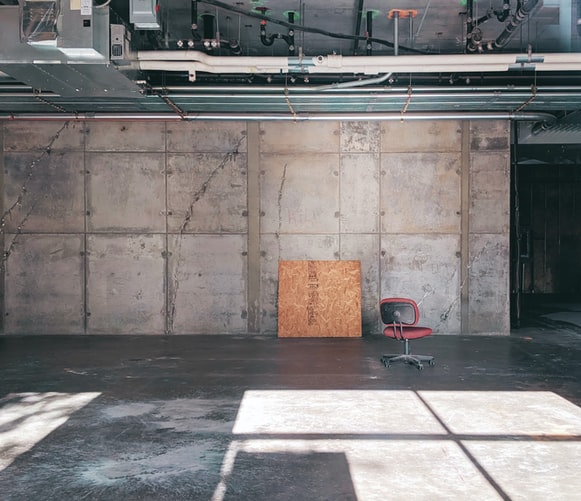Cleanroom installation requires as much careful planning as cleanroom design. When deciding on the best place to install your cleanroom, you’ll need to consider a few factors. First, take a look at your classification. Your cleanroom classification will determine what type of cleanroom you can build, how it should be built, and even what materials you can use in cleanroom construction.
Once you know what kind of cleanroom you can build, you can consider if it will be more efficient or cost effective to install your cleanroom in your existing building or build a freestanding cleanroom. Let’s go over this process in more detail.
Consider Your Cleanroom Classification
Your first stop on the road to a complete cleanroom installation is to look closely at your cleanroom classification. A cleanroom classification defines how “clean” your environment needs to be, specifically noting the allowances for particle sizes and air change rates within your cleanroom.
Your cleanroom’s classification will determine a lot about how your cleanroom can be built and what materials can be used. Depending on the strictness of your cleanroom standards, there may be certain building practices more suited to your needs. For example, cleanrooms with higher cleanliness standards, like aerospace cleanrooms and medical cleanrooms, will have limited options for cleanroom types and materials in order to control airflow and particle size, and limit any potential contamination as much as possible.
Cleanroom Classification and Cleanroom Installation
Higher cleanroom classifications will require more complete control over particle count with frequent air changes and fine adjustments to temperature, humidity, pressure, and static; and filter out not only airborne particulates but also control surface particulates. These types of cleanrooms will likely require the installation of separate, powerful HVAC and filtration systems, and will only use materials that are non-particle shedding and able to be thoroughly cleaned.
If your requirements are less stringent, like in some automotive cleanrooms and plastics manufacturing industries, you will likely be less limited in your material choices and cleanroom types. If you have the room, you may be able to install your cleanroom right in your existing building, and adapt the existing HVAC to control your cleanroom environment.
Whether you can adapt your space for cleanroom installation or you need to construct a separate, freestanding unit, your cleanroom classification will be the guide for your cleanroom design and build.
Where to Install Your Cleanroom
With a full understanding of your cleanroom classification requirements, consider the space and structural demands of your work. Your existing space or designated cleanroom area should leave plenty of room for necessary equipment, furniture, storage, and personnel.
You should also consider your building’s location before your cleanroom installation. Is your building located in an area that experiences more traffic and pollution? Is it next to a manufacturing facility, highway, railway, or shipping terminal? While these might not discourage your location choice, keep in mind they might increase the demand on your cleanroom’s filters, requiring them to be replaced more frequently or the implementation of a strategic airflow pattern to manage contaminants.
Build in Your Space
If your cleanroom classification and available space permit it, you may be able to install your cleanroom in your existing building. Cleanrooms can be built in your manufacturing facility, warehouse, laboratory, or even within another cleanroom. If you’re building a cleanroom using your existing structure, make sure you have enough room for everything it needs to operate, as well as space to allow easy movement and accessibility. You can either build the cleanroom traditionally or complete the cleanroom installation conveniently and quickly using modular cleanroom panels.
The advantages of modular cleanrooms are that they can be installed in less time and for a reduced cost. Fewer people are needed to install a modular cleanroom, which means a quicker lead time, so you can have your cleanroom up and running in just a few days. Modular panels can also be easily customized, repurposed, or modified as your projects and needs evolve.
Construct a Free-Standing Cleanroom
Using HardWall, SoftWall, or RigidWall panels, install your cleanroom in a convenient and accessible place in your facility. Your cleanroom will be designed with the ideal layout to accommodate all equipment, furniture, and employees. The cleanroom can be freestanding and attached to the floor, or suspended from a strong ceiling grid.
When your cleanroom is installed, you’ll also be able to set up and install the HVAC and filtration systems to create your optimal airflow and air change rate, as well as control pressure, temperature, and humidity within the cleanroom environment. Standardized systems and fixtures like fan filter units, lighting modules, and cleanroom furniture make the installation quicker and simpler.
Remodel Your Space for Cleanroom Installation
Depending on the space you’re using to construct your cleanroom, it may require some preparation before the modular panels can be set up and installed. You may need to create more space, adapt existing systems for utilities, heating, and cooling, or hook up new units to connect to your building’s power and ducts. You may also need to add new flooring or insulation in order to meet requirements and prepare the space for cleanroom installation. Always consult your cleanroom classification for guidelines about what materials are acceptable in your cleanroom environment.
With detailed planning and a complete knowledge of your needs and cleanroom requirements, you can install your cleanroom in a place that is convenient, accessible, and compliant with your cleanroom classification. If you know you need a cleanroom, but you’re not sure where you should put it, seek out advice from professionals. The cleanroom design experts at Angstrom Technology can take a look at your needs and your facility, and offer you the perfect solution. To talk with our professional team, give us a call or reach out to us online.


